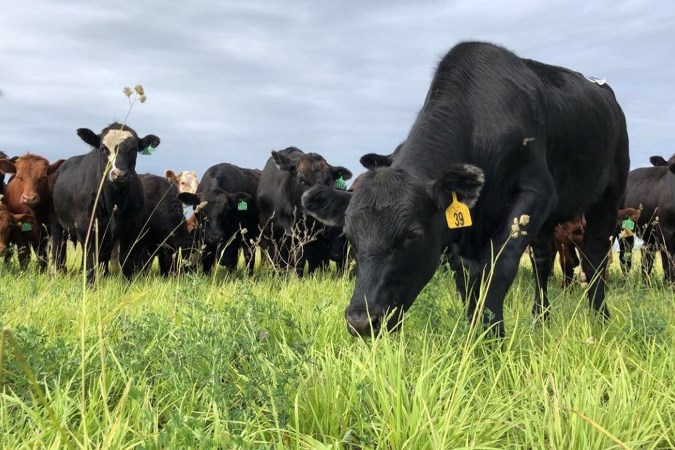A new Beef Industry Integrated Forage Management and Utilization chair will be established at the University of Saskatchewan to connect the study of soils, plants, animals, economics and ecosystems to tap into forage crops’ full range of benefits.
“The chair will help to address concerns raised for a number of years by producers searching for expanded forage management information,” said Matt Bowman, chair of the Beef Cattle Research Council and a producer from Thornloe, Ont.
“We need the science in order to better manage complex forage systems, implement effective utilization strategies and understand the associated environmental benefits created through the dynamic soil-plant-animal interface.”
Funding for the research chair will be provided from a variety of sources. Industry contributions include $2.5 million from the Beef Cattle Research Council and $1 million from the Saskatchewan Cattlemen’s Association. The governments of Canada and Saskatchewan will provide $750,000 through the Canadian Agricultural Partnership. The Global Institute for Food Security at USask will contribute $320,000.
“The role of rangeland and forages in our ecosystem cannot be taken for granted,” said Marie-Claude Bibeau, federal minister of Agriculture and Agri-Food. “Rangeland plants increase the resilience of the ecosystem and create natural benefits such as carbon sequestration and soil stabilization, as well as for pollinators. This new research chair position will help further our understanding in these areas.”
“This research chair will work with partners from across the province to develop practical tools for producers,” Saskatchewan Agriculture Minister David Marit said. “This investment will help grow the livestock sector and bring us closer to achieving the goals outlined in Saskatchewan’s Plan for Growth, including our target to increase livestock cash receipts to $3 billion.”
A 2012 assessment concluded lack of research and development investment in the Canadian forage industry meant advances in forage had not kept pace with developments in other crops. The beef and cattle industry is increasingly seeing forages as a high-value feed source.
“Saskatchewan is looking to increase crop production and livestock cash receipts as a means of economic growth. This new chair will create momentum to meet this objective, and support the agricultural industry worldwide,” said USask Vice-president Research Baljit Singh. “Strengthening this sector and bolstering food security is a focus of USask as we provide research the world needs.”
There’s growing recognition that forage crops play a critical role in nutrient cycling, carbon sequestration, promoting biodiversity, and protecting wildlife habitat. The livestock industry believes the value of these environmental and ecological benefits complement forages’ economic impact.
“Forage production and utilization is the foundation of beef cattle productivity and competitiveness,” said Saskatchewan Cattlemen’s Association chair Arnold Balicki. “After years of advocacy it is gratifying to see this position created via partnership between producers, government, USask and GIFS.”
The new research chair will be located in the College of Agriculture and Bioresources at USask, as a joint appointment between the Department of Plant Sciences and Department of Animal and Poultry Science. Among key roles will be to ensure USask is at the leading edge of research on use of forage in the beef industry, connect expertise in the field locally, nationally, and internationally, and grow funding support for research.
“This is a great opportunity for GIFS and the Plant Phenotyping and Imaging Research Centre program that we manage on behalf of USask, as it gives us the opportunity to work together with partners — government, industry and USask’s College of Agriculture and Bioresources — to deliver value to the agriculture and food sectors,” said GIFS CEO Steven Webb.
“This collaboration will help us advance the sectors in a manner that is economically, environmentally and socially sustainable.”
The international search will begin this summer and USask anticipates filling the position before the end of 2021.




